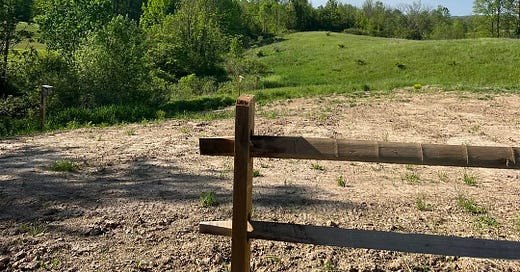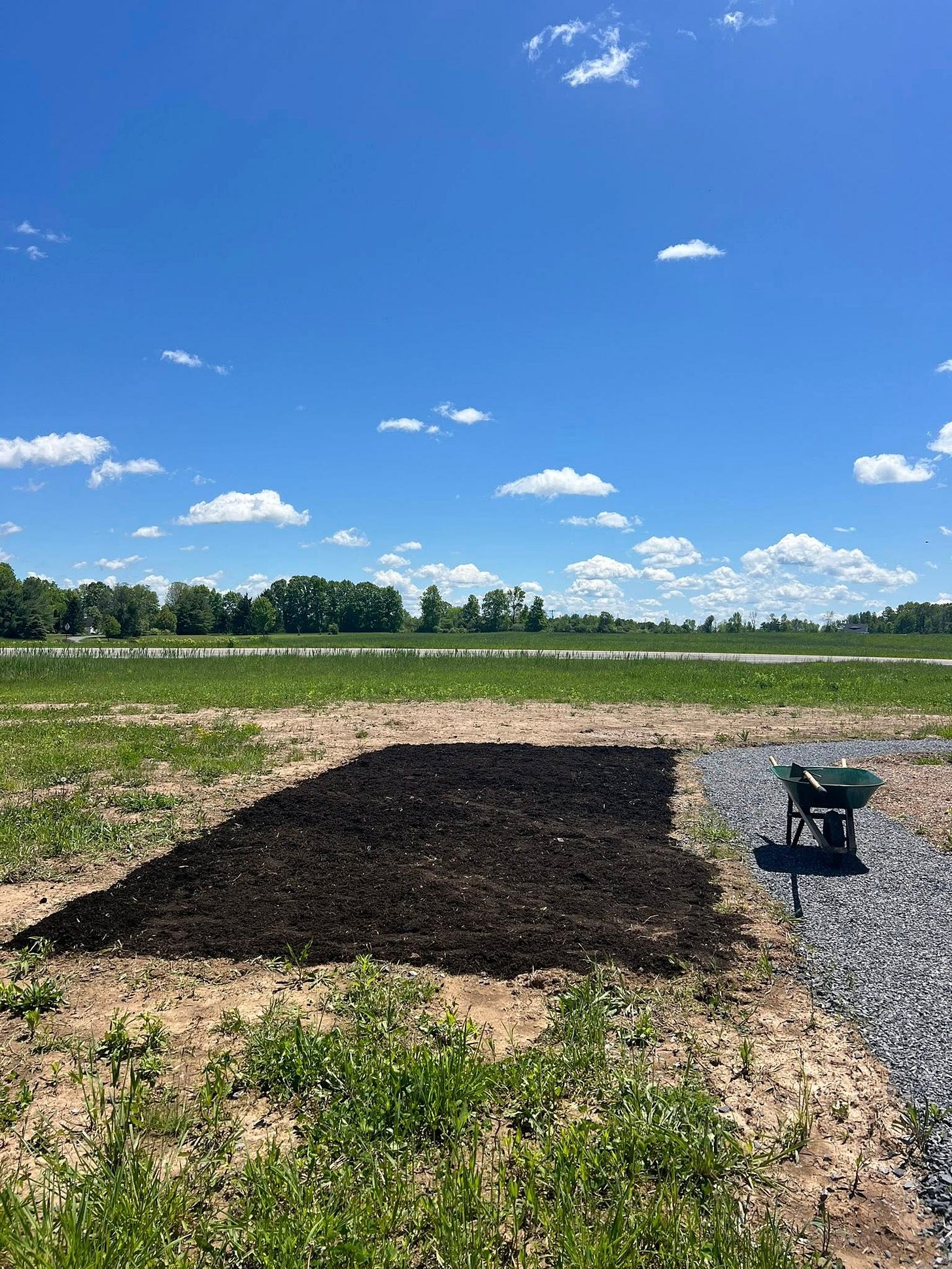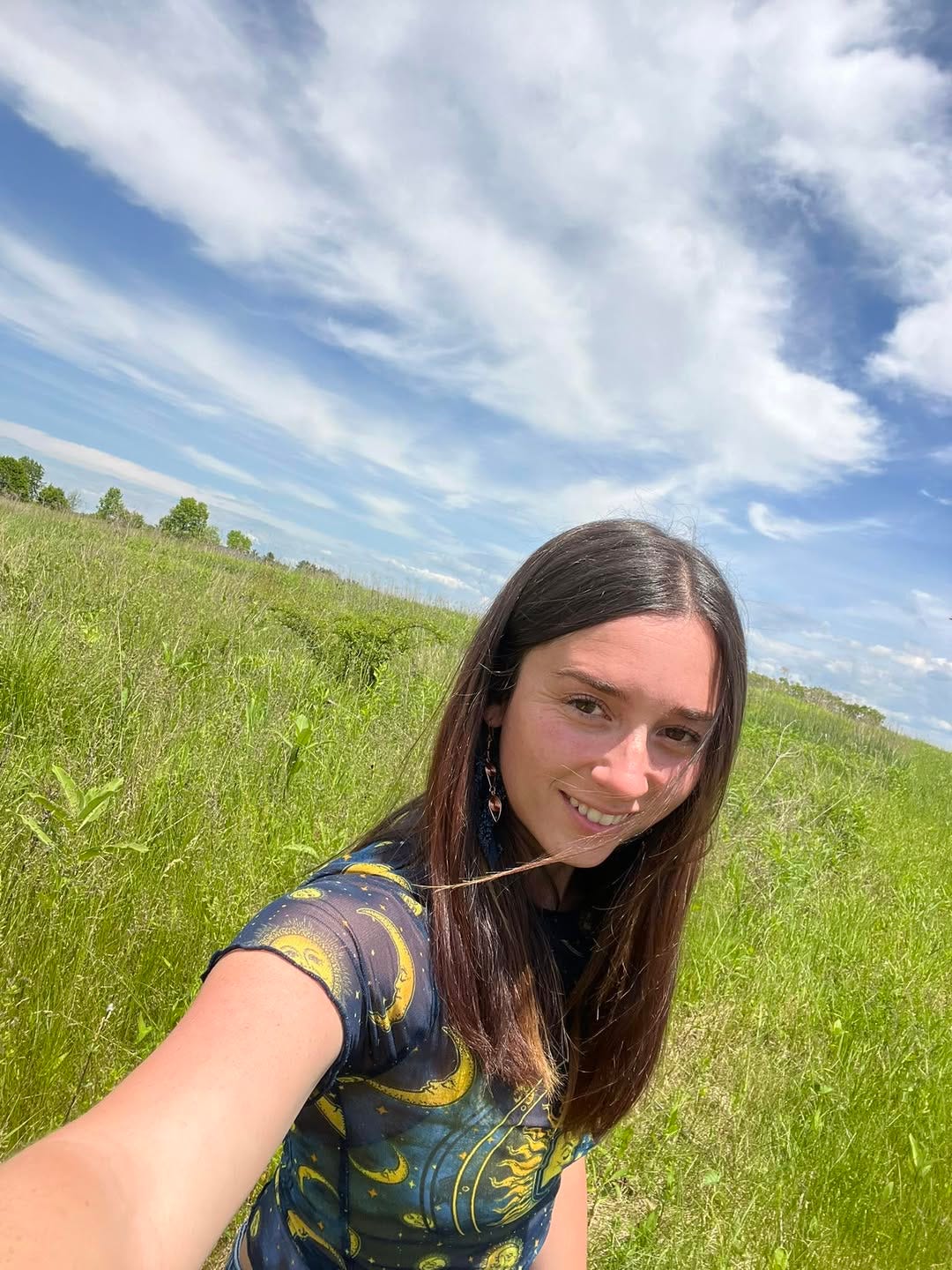The sale of $24 trillion dollars worth of American farmland has begun
Now through 2044 more than $24 trillion dollars worth of farmland and farming assets will change hands as farmers retire. We need everyday people, not corporations, to buy this land.
Considered the largest U.S. wealth transfer since the Homestead Act of 1862: $24 trillion dollars worth of American farmland will change hands now through 2044 (source: The 2025 Farmer’s Almanac).
Why is so much land changing hands?
The average age of the American farmer is over 60. They will retire, pass on, or sell their farms over the next 20-years. This same demographic owns more farmland than any other age group, which lines up with trends in other industries, like homeownership by Baby Boomers (own 38% of all homes in the U.S.) versus Millennials (29%).
In 2017, the USDA reported that farmers over the age of 55 owned 80% of all owner-operated farmland in the US.
Combine an aging farming population with the amount of land held within their demographic, and you get a $24 TRILLION dollar land transfer that is expected to occur over the next 20-years. In fact, over 50% of these farmers will retire in the next decade, which means the biggest ‘push’ within this land transfer is happening between now and 2035.
A financial vacuum of this kind creates two phenomenons in its wake:
opportunity for those who want to get into the farmland/land market
concerns about WHO is buying the land/growing our food in the future
Before I jump into the opportunity angle, I will say that it is a much better future for everyone, rich and poor, young and old, if everyday people buy this land as opposed to corporations, Wall Street investment firms, massive developers, and foreign entities. None of these groups plan to keep the farmland as farmland. Once we lose this land to developments, shopping strips, and dystopian solar arrangements, there will be no going back.
Unfortunately, these groups are more aware of this land transfer than everyday Americans. I can’t tell you how many farmers in my area have been approached by Wall Street to sell their farmland before they’re ready to retire. Wall Street shows up with the check, and many of these farmers feel they have no choice, with no kids behind them ready to take over the operation. Many farmers had children, sure, but their kids went to colleges far away without a desire to work grueling hours on the farm like their parents did. Not to mention, farming wasn’t exactly touted as a glamorous career to those of us that came of age in the 1990s and 2000s.
I know it’s not possible to stop the land grab at the financial investment and solar farm level. I am saying, however, it’s possible for everyday people to buy just a few acres that they turn into a homestead, small farm, community garden, village, or regenerative/sustainable operation.
There will never be a better time to buy US farmland
The opportunity is now there. I know this because I just bought farmland back in 2023 using a loan through Farm Credit East. I didn’t know at the time I was buying land as part of the very beginning of a massive land transfer. The deals have only increased since then.
I am not claiming land is cheap. I know it’s the most expensive it has ever been. That’s what makes land a great investment: it holds its value more reliably than most other investments.
The average cost of a US acre of farmland today is $4,170. That number can swell to $30,000 if the land borders a bustling metropolis, and be as low as $2,000 if it’s undeveloped and ‘in the middle of nowhere.’ There is a middle ground here.
Additionally, we’ve been tricked into thinking we need 10+ acres to “really own a farm.” The reality is that you need less than an acre to feed your family and generate surplus to sell at a farm stand. I know people working 3 acres and a few high tunnels to sell produce to 70 to 80 families weekly through a community-supported-agriculture business model.
When shoppers realize they only need 3 acres to make this all possible, the land grab sounds a little more affordable.
Additionally, you don’t need to buy the land in cash. I didn’t know this until 2023. There are loans through both Farm Credit (you don’t need prior farming experience to get one with Farm Credit) and the USDA. There is also seller financing, renting farming acreage, and charitable remainder trusts with the farmers. I dive into these arrangements in detail in this article.
How we approach this wealth transfer will have implications 200-years from now
Once the farmland is gone… it’s gone. If we let corporations buy up every last inch of our idyllic countryside, we’ll be looking at a much uglier future without stable, local food supply chains. I don’t believe people consider aesthetics enough in this discussion: our collective souls will suffer if we take out green pasture, wildflower fields, meadows, rolling hills, mom and pop farms, and farm stands.
The farms and farmers of the future won’t look like those of the past. The farming industry is going to fracture, and those of you who read along with me here know I believe that is a good thing.
Every week I chat with the farmers in my area, most of whom are over the age of 70. Everything I have read about this land transfer is true. In fact, from my own interactions, the transfer is larger, more severe, and more dire than is being reported. If you’re feeling called to own a piece of land, there will never be a better time than today.
The sale of $24 trillion dollars worth of farmland has officially begun. I hope to be a resource to those looking to get in on the action. Please feel free to ask any questions or get discussions going below. I will link to additional articles I created to make buying farmland easier.
FURTHER READING
Don't have cash to buy land? Here are 3 ways to finance your farming dream
According to the 2025 Farmer’s Almanac, over $24 trillion in farmland assets are going to be for sale over the next 20-years. With the average American farmer being over the age of 60, they are tired, thinking about retiring, and looking for a way ‘out’ to rest their weary bones.
How I bought 6.74 acres of rural land with a loan.
Rewind to July 2023. I had just moved to Saratoga Springs, NY from Florida (I am an Upstate NY native, though) and signed a lease in town. I was coming off nearly a decade of running a freelance writing business and wondering what I was going to do next.










Fantastic article! Have you done any research on “other ways of making money with a farm?” I am talking about ways of creating Agro-tourism, growing specific crops for clients, and the possibility raising exotic and specific meat animals. Farms and farmers are dying. The local government wants the land for cheap and taxable housing, the public thinks all food comes from a restaurant or a supermarket, the vegan activists want food grown in a lab or the NIMBY (Not In My Backyard) of another country. Current farmers are getting old, their children want clean and easy city jobs with fun activities and exciting nightlife. If creative people can see other ways to make a living through farming, rather than just the increasing expense of one crop farming, maybe new farmers would run out to buy land and farm before it’s too late to save the future.
Great article, important topic. My friends at are also trying to tackle this from a different perspective on permies.com/skip